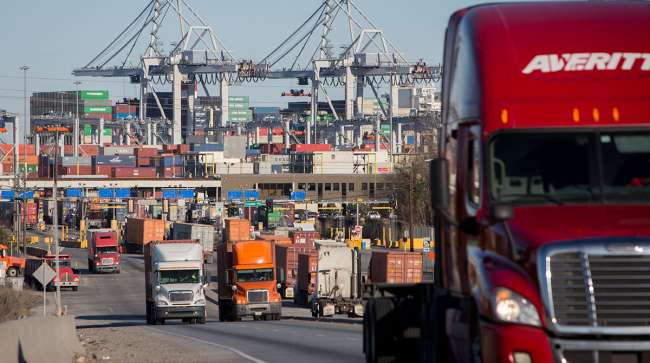US Productivity Posts 2.9% Growth in 2Q

WASHINGTON — U.S. productivity grew at an annual rate of 2.9% in the second quarter, the fastest pace in more than three years, while labor costs actually fell.
The April-June increase in productivity followed a much weaker 0.3% rate of gain in the first quarter, the Labor Department reported Aug. 15. It was the strongest advance since a 3.1% gain in the first quarter of 2015. Labor costs fell at a 0.9% rate in the second quarter, the weakest showing in nearly four years.
Productivity, a key factor determining how fast the economy can grow and how much living standards can increase, has been anemic throughout this expansion. The strong second-quarter gain is expected to be a temporary blip rather than a lasting improvement.
RELATED: US Industrial Production Edged Up 0.1% in July
Productivity is the amount of output per hour of work. The big jump in the second quarter reflected the fact that the gross domestic product, the country’s total output of goods and services, accelerated to a growth rate of 4.1% in the second quarter, the strongest quarterly gain since 2014.
That big jump in output in the second quarter was accompanied by a much smaller gain of 1.9% in the number of hours worked. The combination of stronger output and a smaller increase in hours worked led to the strong increase in productivity.
However, economists do not expect the second-quarter improvement will significantly alter the long-run trend of very anemic gains in productivity.
For all of last year, productivity grew by 1.1%, and that followed a minuscule 0.1% rise in 2016.
Finding a solution to the slowdown in productivity growth is seen as one of the key challenges facing the country. Rising productivity is needed to support increases in living standards. Productivity gains allow companies to pay their workers more without having to boost the cost of their products, a move that can increase inflation.
Economists are uncertain why productivity has been so anemic during the current nine-year expansion. For the past seven decades, from 1947 through 2017, productivity has turned in average annual gains of 2.1%. But between 2007 through 2017, productivity growth has slowed to about half that pace, with average annual gains of just 1.3%.
Without a significant improvement in productivity, the Trump administration will find it difficult to achieve its goal of sustained GDP growth of 3% or better each year. An economy’s potential for growth is determined by an expansion in the labor force, which is determined largely by birth rates and immigration, as well as the growth in productivity.

